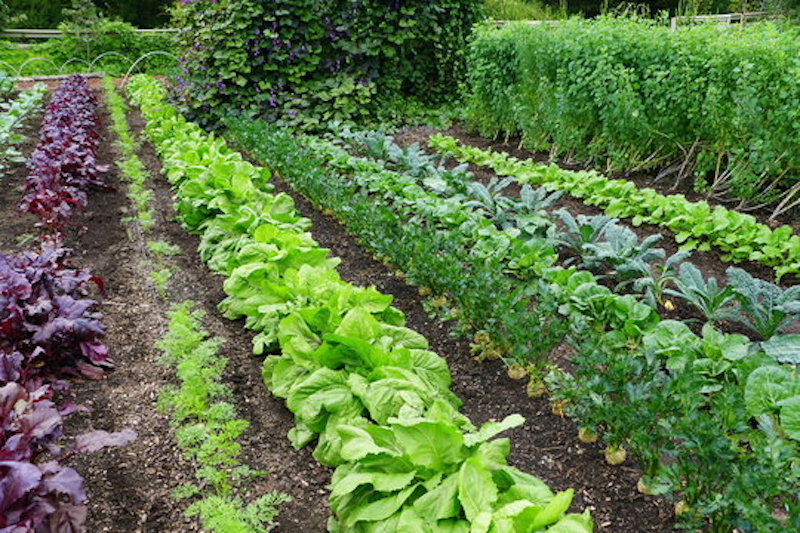The Hort Report: Time to plan your garden for spring, and how to take care of your poinsettia

Happy New Year to everyone from Laura, Hillary, Sandra and myself. We’re praying that 2024 will be a great year for you and your families in everything you plan on doing in your garden, flowerbeds, yard and the rest of your life.
Great news: The daylight hours are getting longer if you haven’t noticed. The first day of spring is less than 80 days away. You have a lot to be looking forward to in the coming days and weeks.
The South Shelby Adult Vo-Ag Horticulture Class starts at 5:30 p.m. Tuesday, Jan. 9 in the South Shelby vo-ag classroom. The class will be every Tuesday until April 30. Call me at 573-588-2040 if you have questions.
The class time will be divided between spending time in the classroom and the greenhouse to discuss how to start and grow your vegetables and flowers for your garden and flowerbed.
In the first class, I plan on talking about how to lay out your garden and how to determine what to plant where. Planning is one thing you can do at this time of year. If fail to plan, you plan to fail. Hopefully, you were writing down where you planted everything this past year. If you haven’t already tilled your garden, you will be able to still see what you planted where in your garden.
Many of you have been receiving seed catalogs for the past few weeks. Here are a few things to remember as you select what seeds you might plant.
If you haven’t done this yet, plan on planting only vegetables your family and friends — and if you are selling any — want to grow for 2024. What do you need more of? Maybe you planted vegetables that no one liked or you grew too much of in 2023. This is when to start deciding what to purchase and grow.
Draw out on a piece of paper how your garden is today. Decide if you want to keep it the same size, enlarge it or make it smaller.
Make sure not to plant the same vegetable in the same spot in your garden in the coming year. Sometimes your vegetables may get a disease that gets into the garden soil. If you plant the same type of vegetable there, it will get the same disease again. Rotating your vegetables helps prevent this and helps the soil profile since you are going to be leaving the roots of most of the vegetables you had there in 2023.
Decide where you are going to grow perennial vegetables in your garden first. Plant them around the outer edge of your garden. They come back each year, so plant them where you can get to them easily. Remember: They will be in that location for many years to come.
If you have raised beds, you will need to rotate your vegetables there as well. If you are using tubs to grow vegetables, rotate vegetables in them each year. It is better to rotate than worry about diseases each year.
Now make a list of what cool-season vegetables you want to grow in 2024, then put them on your garden plan where they will be planted. When selecting the location in your garden, plant them in a location that you can get dried out sooner than the rest of the garden. This will help your cool-season vegetables germinate faster and start to grow sooner and mature faster.
When you are selecting what cool-season vegetables to grow, think about using the same location in your garden to plant another vegetable crop after your cool-season vegetables have been harvested.
As you plan your garden, read on your seed packages how much room each vegetable will need to grow, from planting the seed until you can harvest the produce from your vegetable crop.
Once you have your cool-season vegetables located on your plan, put your warm-season vegetables on your plan, too. As you are drawing out the location of all your vegetables in your garden plan.
Make sure to put this information on your garden plan:
- The name of each vegetable crop you plan to grow in your garden and where they are going to be grown in your garden.
- The amount of room each vegetable crop will need to grow in row length and the distance between each row.
- Dates that each vegetable needs to be planted to get the best vegetable harvest possible. I like to plan on planting in the garden as soon as possible if I want to get a second vegetable crop growing in the same spot in the garden.
- Write down the estimated dates your vegetables will be ready for you to harvest at the proper time.
Doing this planning now will give you the best chance of getting the vegetable seeds you want to be growing this year. In years past, some types of vegetable seeds and varieties have been in short supply.
Doing this now allows you to try to start all the vegetables you are going to be transplanting in your garden from seed yourself. Growing your transplants means you know where the transplant came from so you can be sure the vegetable transplant is 100 percent the variety you want to grow and harvest. Starting and growing your transplants from seed, be it vegetables or flowers, is a lot of fun too.
You might want to draw up several garden plans to get everything right during this time of year. You can draw up plans for flowerbeds as well.
Some of you may have received a poinsettia for Christmas. I have had a few people ask: How do you take care of them to have them last as long as possible?
Poinsettias don’t like extreme heat or cold drafts, so keep them away from heat vents and doors. Don’t place them next to windows where parts of the poinsettia can touch the cold window glass, causing the leaves to dry up and fall off.
Poinsettias like a temperature between 65-70 degrees daily when in bloom. You will need to lower the temperature at night so the plant can cool.
Poinsettias require six or more hours of bright sunlight during the day for them to keep their bright color. They don’t like direct sunlight that could fade or burn the leaves. The best place to put your poinsettia is near an east-facing window.
Poinsettias like humidity. Put them near a humidifier or fill a tray with pebbles and water them. Placing the plant on top of the pebbles will help create humidity for the plant.
Remove any foil your Poinsettia plant is in like you would as a gift from a flower shop. The foil won’t allow the water to get away from the roots, causing root rot that will cause the plant to die.
Don’t overwater your poinsettia but keep the soil moist. Only water when the top 1-2 inches of the potting soil is dry to the touch. Underwatering also can cause the plant to wilt and shed its leaves and die.
Don’t fertilize your poinsettias while it is in bloom. Fertilize it after it has finished flowering for this year.
If you want to keep your poinsettia from year to year, remember that poinsettias don’t like cold weather. They do well in a greenhouse when the temperature of 60-72 degrees. The greenhouse helps produce both high light intensity and humidity.
As the bracts start to fall off and turn yellow, start to let the soil get dry by not watering the soil as much but not letting it get 100% dry. Just water it enough to keep the stem from withering.
Move the poinsettia to a cool dark area between 50-60 degrees. Keep it dry but watered enough to live until late spring. Sometime in late April or early May, put the plant back into a sunny location. Cut the branches on the stem, then cut the stem about 6 inches above the soil level.
Repot the poinsettia plant into a new soil mix that drains well to help prevent the plant from getting root rot. Make sure to water the new soil mix and poinsettia as well and let the water drain out and away.
As your poinsettia starts to actively grow again later in the year, fertilize your poinsettia plant. You should use one tablespoon of 20-20-20 water-soluble fertilizer in one gallon of water, fertilizing only one time a month.
Keep the poinsettia growing during the summer months by watering regularly and fertilizing once a month. Water when the soil feels dry to the touch. Water liberally, allowing the top of the soil to become moist, letting the excess water to drain off. Don’t water any more until the top of the soil is dry.
Once the poinsettia plant’s stem is more than 10 inches long, pinch off the tips of any new branches that come off the main stem. By doing this, you are keeping the strongest branches. This helps encourage the poinsettia to be a bushier plant. You will need to keep the branches pinched once or more a month.
In the future Hort Reports, I will talk about cool-season vegetables and pruning fruit trees.
I appreciate all your questions and look forward to them in the coming days. Call me at 573-588-2040 Shelby County Implement in Shelbina, or just come out and see me with your questions.
Hope you will enjoy your planning for your garden in the coming days and weeks.

Pat Greenwell is the owner of Shelby County Implement in Shelbina, Mo. He was a high school agriculture teacher for 11 years. He has taught adult vocational agriculture since 1987. He also is a research assistant at the Truman State University Ag Department Farm.
Miss Clipping Out Stories to Save for Later?
Click the Purchase Story button below to order a print of this story. We will print it for you on matte photo paper to keep forever.

